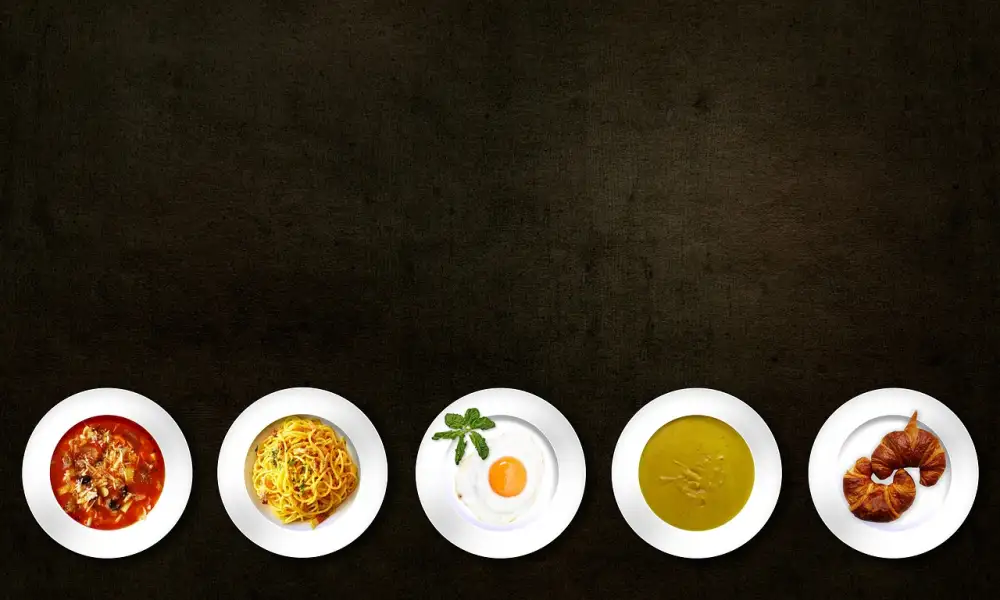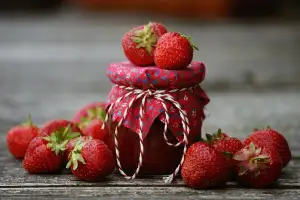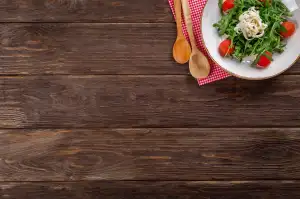Perfectly Poached Eggs: A Step-by-Step Guide to Mastering the Art of Cooking Poached Eggs

- Equipment Needed for Poaching Eggs
- Step-by-Step Guide to Poaching Eggs
- Boiling Water
- Adding Vinegar
- Creating a Whirlpool
- Cracking the Egg
- Cooking Time
- Tips for Perfectly Poached Eggs
- Fresh Eggs
- Water Temperature
- Vinegar Ratio
- Using a Timer
- Serving Suggestions for Poached Eggs
- Classic Eggs Benedict
- Avocado Toast with Poached Eggs
- Poached Eggs with Smoked Salmon
Poached eggs are a culinary delight that can elevate any dish with their delicate texture and rich, runny yolk. This classic cooking technique involves gently simmering an egg in water without its shell, resulting in a tender and velvety egg white surrounding a perfectly cooked yolk. While poaching eggs may seem intimidating, with the right equipment and technique, you can easily master this art and impress your friends and family with your culinary skills. In this guide, we will take you through the step-by-step process of poaching eggs and share some tips for achieving the perfect poached egg every time. So let's dive in and discover the secrets to creating mouthwatering poached eggs!
Equipment Needed for Poaching Eggs
To successfully poach eggs, you will need a few essential tools. Firstly, a medium-sized saucepan with high sides is necessary to hold enough water for poaching. A slotted spoon is crucial for gently lifting the poached eggs out of the water without breaking them. A timer will help ensure that your eggs are cooked to perfection. Lastly, having a small bowl or ramekin to crack the eggs into before adding them to the water will make it easier to slide them in smoothly. With these basic tools, you'll be well-equipped to master the art of cooking perfectly poached eggs.
Step-by-Step Guide to Poaching Eggs
a. Start by bringing a pot of water to a gentle boil. Make sure the water is deep enough to fully submerge the eggs.
b. Add a tablespoon of vinegar to the boiling water. The vinegar helps the egg whites coagulate faster, resulting in a neater poached egg.
c. Create a whirlpool in the pot by stirring the water in a circular motion with a spoon. This will help shape the egg and prevent it from spreading out too much.
d. Crack an egg into a small bowl or ramekin, making sure not to break the yolk. Gently slide the egg into the center of the whirlpool.
e. Let the egg cook for about 3-4 minutes for a soft, runny yolk or 5-6 minutes for a firmer yolk. Use a slotted spoon to carefully remove the poached egg from the water.
Note: Cooking times may vary depending on personal preference and size of eggs.
Boiling Water
To poach eggs perfectly, start by bringing a pot of water to a gentle boil. The water should be deep enough to fully submerge the eggs. It's important to use a pot with a wide surface area to allow for even cooking. Avoid using a small saucepan as it may cause the eggs to stick together. Once the water is boiling, reduce the heat slightly to maintain a steady simmer.
Adding Vinegar
Adding Vinegar: Once the water is boiling, it's time to add a small amount of vinegar. The vinegar helps to coagulate the egg whites, ensuring they stay together during cooking. For every cup of water, add about a tablespoon of vinegar. This ratio is important to maintain the right balance and prevent any overpowering taste from the vinegar. Gently pour the vinegar into the boiling water and give it a quick stir to distribute it evenly. The addition of vinegar will help you achieve perfectly poached eggs with beautifully set whites.
Creating a Whirlpool
Creating a whirlpool is an essential step in poaching eggs. Once the water has come to a gentle boil and vinegar has been added, use a spoon or spatula to create a circular motion in the water. This swirling motion helps to bring the egg together, preventing it from spreading out too much. The whirlpool also helps to form a nice shape and keeps the egg white wrapped around the yolk. Be careful not to create too vigorous of a whirlpool as this may cause the egg to break apart.
Cracking the Egg
To crack the egg for poaching, gently tap it on a flat surface to create a small crack. Then, hold the egg close to the surface of the simmering water and carefully drop it in. The closer you are to the water, the less chance of the egg breaking apart. The key is to be gentle and steady while handling the egg to ensure it remains intact during cooking.
Cooking Time
Cooking Time: Once the egg is in the water, let it cook for about 3-4 minutes. This will result in a perfectly poached egg with a runny yolk and set whites. If you prefer a firmer yolk, cook for an additional minute or two. Use a slotted spoon to carefully remove the poached egg from the water and place it on a paper towel-lined plate to drain excess water before serving.
Tips for Perfectly Poached Eggs
a. Fresh Eggs: Always use fresh eggs for poaching as they hold their shape better in the water.
b. Water Temperature: Start with simmering water, not boiling. The ideal temperature is around 180°F (82°C).
c. Vinegar Ratio: Add a splash of vinegar to the water to help coagulate the egg whites. A ratio of 1 tablespoon of vinegar to 4 cups of water works well.
d. Using a Timer: Set a timer for 3-4 minutes for soft-poached eggs or 5-6 minutes for medium-poached eggs. This ensures consistent results every time.
Remember, practice makes perfect when it comes to poaching eggs. Don't be discouraged if your first few attempts are not perfect - keep trying and soon you'll be a pro at cooking perfectly poached eggs!
Fresh Eggs
One of the key factors in achieving perfectly poached eggs is using fresh eggs. Fresh eggs have a firmer egg white, which helps to hold the shape of the poached egg. When using older eggs, the egg whites tend to be more watery and spread out in the water, resulting in a less attractive poached egg. To ensure freshness, check the expiration date on the carton and choose eggs that are within a week of their expiration date. Additionally, you can test the freshness of an egg by placing it in a bowl of water - if it sinks to the bottom and lays flat on its side, it is fresh; if it stands upright or floats, it is not fresh and should be discarded. By using fresh eggs, you'll be well on your way to mastering the art of cooking perfectly poached eggs.
Water Temperature
Water temperature plays a crucial role in achieving perfectly poached eggs. It is important to bring the water to a gentle simmer, not a rolling boil. The ideal water temperature for poaching eggs is around 180-190°F (82-88°C). This allows the egg whites to set while keeping the yolk soft and runny. Using a thermometer can help ensure that the water is at the right temperature.
Vinegar Ratio
When it comes to achieving perfectly poached eggs, the vinegar ratio plays a crucial role. Adding vinegar to the boiling water helps coagulate the egg whites faster, resulting in a neater and more compact shape. The recommended vinegar ratio is approximately 1 tablespoon of vinegar for every cup of water. However, you can adjust this ratio according to your preference. Some people prefer a stronger vinegar taste, while others prefer a milder flavor. Experiment with different ratios until you find the perfect balance that suits your taste buds. Remember, the vinegar should not overpower the delicate flavor of the eggs but rather enhance it subtly.
Using a Timer
Timing is crucial when it comes to poaching eggs. To ensure perfectly cooked eggs every time, it is recommended to use a timer. The ideal cooking time for poached eggs is around 3-4 minutes for a soft yolk and slightly longer for a firmer yolk.
By setting a timer, you can avoid overcooking or undercooking the eggs. This will help you achieve the desired consistency and texture of the yolk, whether you prefer it runny or more set.
Remember to start the timer as soon as you add the egg to the simmering water. This will give you an accurate measure of the cooking time and prevent any guesswork.
Using a timer takes away the stress of constantly checking on the eggs and allows you to focus on other aspects of your meal preparation. So don't forget to set that timer and enjoy perfectly poached eggs every time!
Serving Suggestions for Poached Eggs
a. Classic Eggs Benedict: Top a toasted English muffin with a poached egg, Canadian bacon, and hollandaise sauce for a classic and indulgent breakfast dish.
b. Avocado Toast with Poached Eggs: Spread mashed avocado on toasted bread and place a perfectly poached egg on top. Sprinkle with salt, pepper, and red pepper flakes for a delicious and healthy meal.
c. Poached Eggs with Smoked Salmon: Serve your poached eggs alongside smoked salmon on a bed of greens. Add some lemon juice, dill, and capers for a refreshing and elegant brunch option.
These serving suggestions will take your poached eggs to the next level, adding flavor and variety to your breakfast or brunch menu. Experiment with different combinations to find your favorite way to enjoy this versatile dish!
Classic Eggs Benedict
Classic Eggs Benedict is a timeless breakfast dish that perfectly showcases the beauty of poached eggs. To make this delectable creation, start with a toasted English muffin as the base. Top it with a slice of Canadian bacon or ham, followed by a perfectly poached egg. The pièce de résistance is the rich and velvety hollandaise sauce drizzled generously over the top. The combination of the runny yolk, savory meat, and creamy sauce creates a harmonious symphony of flavors that will leave you craving for more. Serve it alongside some crispy hash browns or fresh fruit for a complete and satisfying meal.
Avocado Toast with Poached Eggs
Avocado toast with poached eggs is a delicious and nutritious way to start your day. The creamy avocado pairs perfectly with the runny yolk of a poached egg, creating a mouthwatering combination of flavors and textures. To make this dish, simply toast a slice of bread until golden brown, mash ripe avocado onto the toast, and top it off with a perfectly poached egg. Sprinkle some salt, pepper, and red pepper flakes for an extra kick. The result is a satisfying breakfast or brunch option that will leave you wanting more.
Poached Eggs with Smoked Salmon
One of the most delicious and elegant ways to enjoy poached eggs is by pairing them with smoked salmon. The combination of the rich, creamy egg yolk and the salty, smoky salmon is simply irresistible.
To create this mouthwatering dish, start by poaching your eggs following the step-by-step guide mentioned earlier. Once your eggs are perfectly cooked, carefully remove them from the water using a slotted spoon and place them on a paper towel to drain any excess water.
Next, lay a few slices of smoked salmon on a plate or toasted bread. Gently place the poached eggs on top of the salmon. The heat from the eggs will slightly warm up the salmon, enhancing its flavor even more.
To add an extra touch of luxury to this dish, you can also drizzle some hollandaise sauce over the eggs. The creamy sauce will complement both the eggs and smoked salmon beautifully.
For added freshness and crunch, garnish your poached eggs with smoked salmon with some chopped chives or dill. These herbs not only add a pop of color but also bring a subtle herbaceousness that balances out the richness of the dish.
Serve your poached eggs with smoked salmon alongside some lightly dressed greens or a side of crusty bread for a complete and satisfying meal. This dish is perfect for brunches or special occasions when you want to impress your guests with your culinary skills.
So next time you're in the mood for something indulgent yet sophisticated, give poached eggs with smoked salmon a try. You won't be disappointed!
In conclusion, mastering the art of cooking poached eggs can elevate your culinary skills and add a touch of sophistication to any meal. With the right equipment and following the step-by-step guide, you can achieve perfectly poached eggs every time. Remember to use fresh eggs, maintain the correct water temperature, and add vinegar in the right ratio for optimal results. Using a timer will ensure that your eggs are cooked to perfection. Once you have mastered the technique, you can enjoy poached eggs in various delicious dishes like classic Eggs Benedict, avocado toast with poached eggs, or paired with smoked salmon. So go ahead and impress your family and friends with your newfound skill in cooking perfectly poached eggs!
Published: 28. 12. 2023
Category: Recipes



